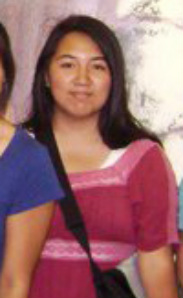The Struggle of Female Scientists

March 16, 2012
By Janet Nguyen Women in the field of science are now earning Ph.D.’s at an unprecedented rate and, according to a study funded by the National Science Foundation, also have better chances than their male peers at obtaining tenure-track positions. If only they applied. [1] Women have made great strides in the field of science, mollifying the public perception that gender inequality in the workforce is an archaic problem of misogynistic institutions past; yet a male dominated culture persists, albeit, often in a discreet manner. This prevents some women from even considering obtaining authority positions within the higher education community or from being satisfied with their positions if they have one. [1] The burdens of female scientists begin even before they face the challenges of family life and inflexibility of tenure requirements. Biases at the undergraduate and graduate level deter younger women who are innovative and passionate about science. Kristen Danhour, a sophomore chemistry major at UCLA, decided to pursue a career in the sciences because of how open-ended the subject is and the constant discoveries that are being made. However, despite her passion for the field, there are still some problems that she must face. “As a female, I feel like we almost have to prove ourselves to our male peers to be treated as an equal,” she says. “We have to prove our intelligence first while males are initially taken seriously.” Both blatant and subtle discrimination are clearly dangerous; however, the latter poses a different threat in that it is not easily identifiable and often persists unnoticed within the community. At the faculty level, scholars often put in 50 hours a week and are required to do a certain amount of research and publishing within a set time period in order to obtain tenure.[2] These seemingly innocuous tasks serve as barriers for women specifically because many of them are just beginning to start a family, or they are their family’s primary caretakers. A study in Public Library of Science (PLoS) found that 45 percent of female science faculty members have fewer children than they want, compared to 25 percent of male science faculty members. In addition, 48 percent of female faculty have difficulties in handling the pressures of their workload and the responsibilities of family, compared to 32 percent of science male faculty members.[3] "Biases at the undergraduate and graduate level deter younger women who are innovative and passionate about science." Along with the subtle mechanisms that discriminate against women, there is also a blatant disregard for female faculty within the scientific community. Men frequently choose to work with other men on projects and there is often a focus on a woman’s attitude and the way she carries herself, rather than on her intelligence (while there is rarely such a focus on a man’s attitude). [4] In the case of transgendered scientist Ben Barres, the neurobiologist has had firsthand, personal experience being treated as a woman and a man [5]. Barres wrote, “The main difference I have noticed is that people who don’t know who I am transgendered treat me with much more respect,” in comparison to how he was treated as a woman [5]. In one instance, a male surgeon actually revealed to him that he believed that all the male surgeons he had met were better than the female ones. [5]. In another instance of discrimination, Nancy Andreasen, a psychiatrist at the University of Iowa, was treated with much more respect when people did not know her gender. Her publications were accepted at a much higher rate after she used the initials “N.C. Andreasen.” [5] While many often refer resort to claiming that the lack of advancement on a woman’s part in the field of science may be due to other factors, such as intelligence or motivation, Barres and Andreasens’ experiences control for such variables and demonstrate that their unique talents and abilities would otherwise have been praised had they been male, or in the former’s case, male at the time he was discriminated against. The scientific field is one in which biases still heavily persist against women for many reasons, primarily due to stereotypes. Alya Elhawary, a Chemical Engineer at the Advanced Technology Center in Palo Alto, CA part of Martin Space Systems Company, says, “The biggest hurdle is that young girls, especially around middle school age, don’t feel they’re smart enough to do math and science. There’s still this stigma that boys are naturally better at these subjects than girls and that’s simply not true. In fact girls often score better than boys in math around this age.” Furthermore, negative associations with science are consistently being perpetuated by the media. Marissa Mayer, vice-president at Google, said that there is a stereotype of engineers as being “all-night coders [and] hackers with pasty skin.” [6] Such reinforcement of (false) stereotypes has undoubtedly led to the disparity of the amount of women in the STEM field compared to the amount in the humanities. Because of this, women in the humanities have more opportunities to garner support from fellow women within their programs. The glass ceiling for women has always existed. Even though many women have been able to bypass it, such a structure will never be able to be fully shattered if the problems that plague the female scientific community are never addressed and removed from the workplace and the classroom. Fortunately, progress has been made to rectify these problematic situations, demonstrating that efforts to combat discrimination in the science fields have not been futile. In 2003, the University of California system granted new mothers “leave of two semesters without teaching…and six weeks’ paid maternity leave to graduate students.” [2]. This policy has led to an 37% more assistant professors having children. [2] Programs geared towards encouraging women to pursue their dreams in the science fields are also growing. Elhawary, in addition to her job at Martin Space Systems Company, is one of the vice presidents of the Society of Women Engineers Santa Clara Valley section where they have workshops, events, and tours on science targeting girls in middle school and high school. Even just discussing the issue of female underrepresentation in the sciences during class can bring greater awareness. There is usually such an unyielding preoccupation with focusing on the curriculum teachers are given during middle school and high school, that the discussion of important social issues is deemed as unimportant. However, by discussing the issue early on, girls will realize that gender does not determine a person’s ability to be successful at math or science, and more will perhaps consider pursuing it themselves. There is still progress to be made, but by altering our society’s stereotypes about women, hopefully gender equality in the sciences may cease to exist. If it does not, the STEM fields are in danger of losing bright females minds because of unfounded misconceptions about what women are capable of. --- References: [1] Scientific American. “Why Aren’t More Women Tenured Science Professors?” http://www.scientificamerican.com/article.cfm?id=women-tenured-science-professors (Jun. 19, 2009) [2] New York Times, Economix.”Keeping Women in Science on a Tenure Track,” http://economix.blogs.nytimes.com/2011/01/05/keeping-women-in-science-on-a-tenure-track/ (Jan. 5, 2011) [3] Macleans, On Campus. “Female Science Profs Less Satisfied,” http://oncampus.macleans.ca/education/2011/08/10/female-science-profs-less-satisfied/ (Aug. 10, 2011) [4] Daily Finance. “MIT Reports Gains for Female Professors, but Obstacles Remain,” http://www.dailyfinance.com/2011/03/24/mit-reports-gains-for-female-professors-in-science-and-engineeri/ (Mar. 24, 2011) [5] Washington Post. “Male Scientist Writes of Life as Female Scientist,” http://www.washingtonpost.com/wp-dyn/content/article/2006/07/12/AR2006071201883.html (July 13, 2006). [6] The New Yorker. “A Woman’s Place.”(July 11 & 18, 2011) Image Source ---
Liked this article? Read more Opinion! About the Author
Janet Nguyen
Mount San Antonio College ‘12. I’m currently a sophomore majoring in English; however, I am enthusiastic about anything science related, specifically neuroscience! Along with these interests, one of my biggest passions is discussing gender and ethnic issues. I am also a contributor for another online magazine, where I write about Hispanic art and culture. In my free time I love reading, going on sporcle.com, and discovering new music and movies. Comments?
|
The Scientista Foundation, Inc. All Rights Reserved © 2011-2021 | Based in NY | [email protected]
The Network for Pre-Professional Women in Science and Engineering
The Scientista Foundation is a registered 501(c)(3) -- Donate!
The Network for Pre-Professional Women in Science and Engineering
The Scientista Foundation is a registered 501(c)(3) -- Donate!
